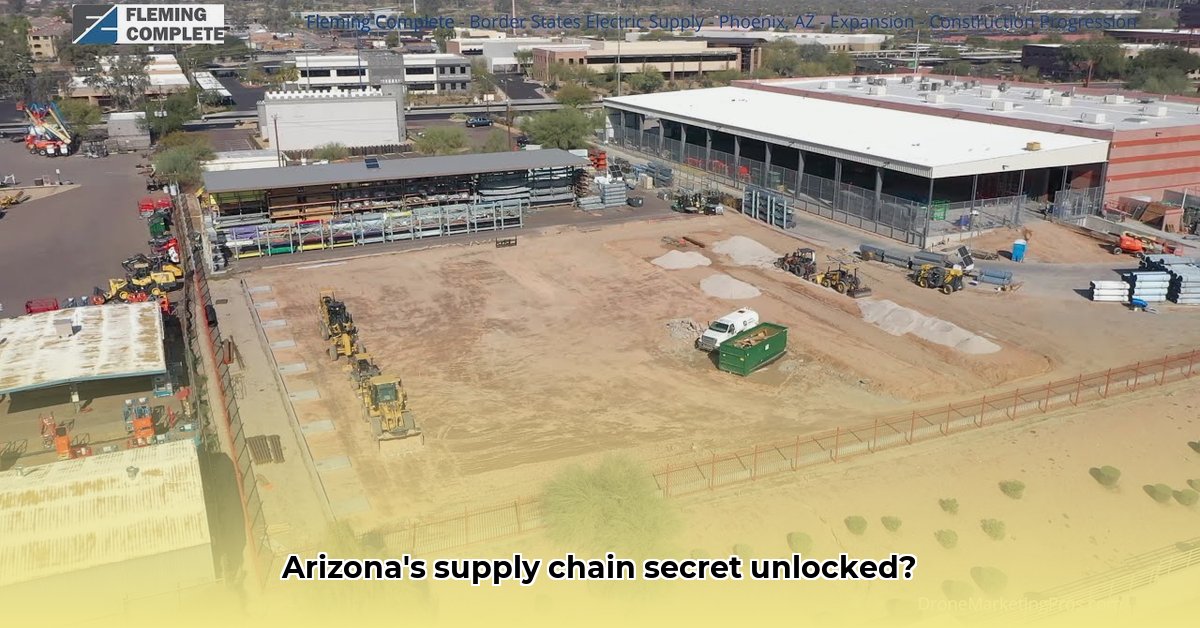
Border States Electric Phoenix AZ: Optimizing Supply Chain Performance
Border States Electric (BSE), a major supplier of electrical equipment, operates a vast network across the US, including a significant presence in Phoenix, Arizona. This article analyzes BSE's Phoenix location supply chain, highlighting areas for improvement and offering actionable strategies to enhance efficiency and customer satisfaction. The analysis focuses on leveraging data-driven insights to optimize inventory management, streamline logistics, and mitigate potential risks. How can BSE ensure the right parts are in the right place at the right time?
Understanding the Challenges: Scale and Complexity
BSE's extensive network, while a strength, creates significant supply chain complexities. Managing inventory, deliveries, and customer service across numerous branches requires sophisticated coordination and robust systems. The sheer volume of transactions and the diversity of customer needs necessitate a strategically designed approach. Isn't optimizing this complex network crucial for maintaining a competitive edge? The Phoenix branch, in particular, requires a tailored strategy to ensure optimal performance within the broader BSE ecosystem.
Phoenix Branch Analysis: Identifying Bottlenecks
A comprehensive analysis of the Phoenix branch's performance is needed to identify specific bottlenecks hindering efficiency. Crucial data points include order processing times, stockout rates, customer satisfaction scores, and delivery timelines. This information provides a clear understanding of current performance levels, setting a baseline for improvement. Without this quantitative data, improvements remain speculative. A thorough assessment is the first step towards creating a high-performing supply chain.
Actionable Strategies for Enhanced Efficiency
Short-Term Improvements: Quick Wins
- Standardize Processes: Implementing consistent order processing, customer service, and inventory management practices across all branches (including Phoenix) ensures streamlined operations and reduces inconsistencies. This standardization can significantly improve operational efficiency.
- Inventory Management Software: Adopting advanced inventory management software provides real-time visibility into stock levels, preventing shortages and minimizing overstocking. This allows for data-driven decisions, avoiding costly inefficiencies. How can real-time inventory tracking improve decision-making?
- Local Market Analysis: Understanding localized demand in Phoenix allows for more accurate inventory forecasting and targeted procurement. This reduces waste and ensures high-demand items are readily available.
Long-Term Strategies: Sustainable Improvements
- Strategic Logistics Partnerships: Collaborating with reliable logistics providers streamlines deliveries, potentially reducing costs and transit times. This requires careful vendor selection based on proven reliability and performance metrics.
- Centralized Inventory System: Implementing a central inventory system provides a holistic view of stock levels across all locations. This enhanced visibility facilitates better resource allocation and proactive inventory management. How can centralized inventory data enhance overall efficiency?
- Warehouse Automation: Automating warehouse operations in high-volume locations like Phoenix improves efficiency and reduces human error. This includes automation of tasks such as picking, packing, and shipping.
The Role of the Branch Manager: On-the-Ground Leadership
Branch managers play a vital role in optimizing local performance. They are responsible for tailoring inventory to local demand, improving "will-call" and "curbside pickup" efficiency, and ensuring efficient staff training. Empowering branch managers with the right tools and resources is crucial for achieving localized optimization. What role does effective branch management play in overall supply chain success?
Customer-Centric Approach: A Partnership for Success
Customer collaboration is key. Encouraging the use of services like "will-call" or "curbside pickup" reduces burdens on BSE resources. Online ordering and tracking provides transparency and improves communication, further enhancing customer satisfaction. The feedback loop provided by customers is crucial for identifying areas for improvement. How does customer engagement contribute to supply chain improvements?
Risk Mitigation: A Proactive Stance
Supply chain risks are inherent. Proactive risk management is essential. The following table outlines key risks, their likelihood, impact, and mitigation strategies:
| Risk Category | Likelihood | Impact | Mitigation Strategy |
|---|---|---|---|
| Inventory Discrepancies | Medium | Medium | Implement robust inventory tracking and management system. |
| Transportation Delays | Medium | High | Diversify transportation providers; optimize delivery routes. |
| Staff Shortages | Low | Medium | Invest in employee training and retention programs. |
| Regional Market Shifts | High | High | Continuous market analysis and flexible resource allocation. |
| Cybersecurity Threats | Low | High | Implement strong cybersecurity measures; regular security audits. |
Legal and Regulatory Compliance: Maintaining Adherence
Navigating regulatory complexities, including transportation, environmental, safety, and tax regulations, is crucial. Non-compliance leads to penalties and reputational damage. Maintaining strict adherence to applicable laws is paramount.
Conclusion: A Continuous Journey of Improvement
Optimizing BSE's Phoenix branch supply chain requires a continuous, data-driven approach. Prioritizing customer focus and adapting to changing market conditions is key to long-term success. This is an ongoing process of refinement and improvement, demanding consistent attention and commitment. The implementation of the strategies outlined above will contribute significantly to improving efficiency and maximizing both customer satisfaction and profitability.